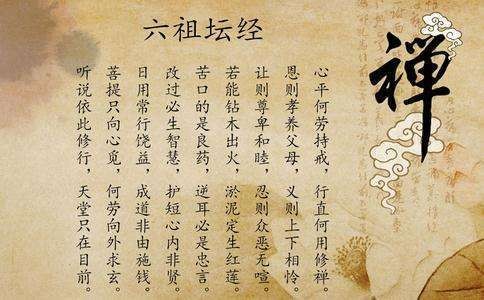The Power of a Calm Mind: Life Wisdom in Zen Buddhism
YouTube上有很多教育频道,如 Crash Course 和 The School of Life #生活技巧# #学习技巧# #在线学习资源推荐#
The Root of the Thought "A Calm Mind is the Way"
The phrase "A calm mind is the way" first appeared in the "Zhaozhou Record": "What is the way? Nanyuan said: A calm mind is the way." When the disciple asked, "Is there still a need to pursue it?" Nanyuan replied, "Do not desire to pursue." Here, "calm mind" is directly identified as the essence of "the way," rejecting the path of cultivation, gains and losses, and pursuits. This response can be said to reveal the essence of Zen Buddhism— the way is not sought externally, but is in the present moment.
This thought is rooted in the Buddhist view of "emptiness" and "formlessness," and is also deeply influenced by the Daoist ideas of "governing by non-action" and "holding simplicity and preserving clumsiness." Buddhism advocates that all phenomena are without self, and emptiness is the essence, while Daoism states that "the great way is formless." Zen integrates both, proposing the practice direction of "the mind is the Buddha" and "not establishing words."
"Calm" is not vulgar or mechanical, but a state of mind that is untainted, uncontrived, and free from attachment. In this sense, "calm mind" is the awakened heart that transcends the three poisons of greed, anger, and ignorance, and is the true embodiment of the path of "non-attachment." This thought profoundly influenced later Zen definitions of the relationship between "awakening" and "life," laying the philosophical foundation for Chinese-style daily Zen practice.
Life is Practice: Zen's Return to the Everyday
Zen emphasizes that "the way is in daily use," which differs from other religions that focus on rituals, scriptures, and ascetic practices. Since the Sixth Patriarch Huineng advocated "the Bodhi tree is not a tree, and the bright mirror is not a platform," the Zen school increasingly values "sudden enlightenment" and "vivid mindfulness." A calm mind does not exclude the dry Zen mentality of life, but rather sees life itself as the field of awakening.
The story of Zhaozhou's "Go drink tea" best embodies this spirit. When a disciple asked, "What is the essence of the Buddha's teachings?" Zhaozhou did not expound on scriptures or establish teachings, but simply said, "Go drink tea." Drinking tea means returning to the present and realizing life itself, no longer seeking hollow answers that are detached and ungrounded. This approach appears plain, yet reveals the fundamental stance of Zen, "directly pointing to the human heart, seeing nature and becoming a Buddha."
In daily life, Zen practice does not reject mundane labor, but regards sweeping, chopping wood, carrying water, and cooking as places of practice. Whether it is Baizhang Huaihai's "If you do not work for a day, you do not eat for a day," or Dongshan Liangjie’s "Walking is Zen, sitting is Zen," both signify the profound meaning of "life is the way."
This return to life as a practice method creates a strong resonance between Zen and Chinese scholars, farmers, artisans, monks, and even ordinary people, making Buddhism no longer a religion of transcendence, but a philosophy that can "live life."

The Mind is the World: Zen's Mechanism for Psychological Adjustment
Behind "a calm mind is the way" is a profound insight into human emotional fluctuations and cognitive attachments. Zen believes that the mind is the source of all phenomena, and the appearance of the world arises from the mind. The saying "the environment changes with the mind" does not deny external existence, but points out that a person's experience of reality is deeply influenced by their mental state.
When a person is attached to gains and losses, the mind becomes turbulent; when a person can treat both favorable and unfavorable situations with a calm mind, the mind remains unmoved. Therefore, "calm mind" is not only a philosophical concept but also an effective tool for emotional adjustment and psychological care. Modern psychological practices such as mindfulness meditation and cognitive behavioral therapy are essentially highly compatible with Zen's practice of tranquility and insight.
In the "Transmission of the Lamp," it is recorded that a monk asked Zhaozhou, "What is the core of the Buddha's teachings?" Zhaozhou replied, "A pure heart is it." When we can treat the chaotic world with a non-discriminating and non-attached heart, suffering transforms into coolness, and anxiety returns to stability. This ability to manage one's mindset is the most practically meaningful manifestation of Zen wisdom in modern society.
Expressions of "Calm Mind" in Literature and Art
The spirit of "a calm mind is the way" is widely reflected in Chinese literature and art. Since the Tang and Song dynasties, Zen-inspired landscape paintings, Zen poetry, Zen tea, and Zen music have all embraced simplicity, distance, and nature as beauty, constructing an aesthetic system of "ethereal and distant."
Su Dongpo wrote in "Ding Feng Bo," "Looking back at the desolate place, returning, there is neither wind nor rain nor sunshine," which is a model of "calm mind" in poetry. His life was full of ups and downs, yet he could transform sorrow into tranquility in his poetry, realizing the Zen meaning of "no obstacles." Similarly, Wang Wei's "Walking to the end of the water, sitting to watch the clouds rise," and Liu Zongyuan's "Fishing alone in the cold river snow" also reflect an aesthetic pursuit of peace of mind through nature.
In the realm of calligraphy and painting, artists like Bada Shanren, Shitao, and Master Hongyi wrote Zen with sparse brushstrokes, seeking spirit rather than form. Their works are not only visual art but also manifestations of the soul, echoing "calm mind" in the strokes of ink.
These artistic achievements prove that "a calm mind is the way" is not only a religious philosophy but also a cultural source that guides literati, artists, and even ordinary people in constructing the meaning of life.
The Return of Zen Spirit in Contemporary Life
In contemporary urban life, "calm mind" has become an important spiritual resource for coping with stress, anxiety, and information overload. More and more people are beginning to learn Zen practice, meditation, and mindfulness exercises to regain inner peace and focus. In this process, traditional Zen thoughts enter modern psychology, life management, and educational systems in a new context.
In the workplace, a calm mind can help individuals break free from excessive comparison and anxiety; in families, a calm mind encourages mutual acceptance and letting go of control; in social life, a calm mind reminds us to look lightly at results and focus on the process, not losing balance due to temporary gains and losses.
"A calm mind is the way" does not encourage avoidance or negativity, but is a proactive attitude of "being at ease in the present"—not seeking, not rejecting, not clinging, not avoiding. This attitude towards life is applicable not only to Zen practitioners but also to anyone seeking harmony of body and mind and pursuing inner stability.
For this reason, "calm mind" has gradually become a cultural symbol, appearing in various public cultural spaces such as psychological courses, life aesthetics lectures, tea ceremonies, incense ceremonies, and slow living advocacy, becoming a practical way for modern people to integrate themselves in a fragmented world.
The Educational Wisdom of "Not Establishing Words"
Zen emphasizes "transmission outside the teachings, not establishing words," which does not deny language but points out that true understanding transcends concepts. A calm mind is about understanding rather than speaking, acting rather than thinking. This educational concept remains enlightening in contemporary "immersive learning" and "experiential education."
For example, Zhaozhou often uses everyday language when posing questions to his disciples, such as "Go drink tea" or "Wash the bowl," guiding understanding through daily actions rather than explaining doctrines. He does not emphasize "knowing," but guides "reaching." This resonates with the current educational emphasis on "unity of knowledge and action" and "situational education."
Moreover, Zen focuses on the teaching method of "teacher and student responding to the situation," as each person's understanding is different and needs to be stimulated through individualized guidance and the current opportunity, rather than uniform indoctrination. This flexibility, high sense of presence, and respect for individuals have lasting value in today's educational reform, psychological counseling, and interpersonal communication.
Therefore, "a calm mind is the way" is not only the philosophical destination of Zen but also a model of a way of thinking, reminding us to face the complex world with fewer expectations, a more relaxed mindset, and deeper insights, and to settle ourselves and bear the world in the most ordinary aspects of life.
The Practice of Calm Mind in Interpersonal Relationships
In Zen's view, the disturbances between people mostly stem from attachment to the "self" position and judgment. Comparison, calculation, competition, and suspicion all arise from the mind. The so-called "calm mind" is not only an internal practice of self-adjustment but also a wise attitude for handling interpersonal relationships. It is neither indifference nor avoidance, but a way of existing without compulsion, limitations, or defenses.
Zen advocates "just fulfill the ordinary mind, without any holy understanding," meaning that when you no longer cling to psychological traps like "I am superior to you" or "you must understand me," the mind naturally becomes stable. The most common predicament in relationships often arises from overly high expectations, calculating returns, or mistakenly believing that control is the means of maintenance. The attitude of "calm mind," on the contrary, is to accept others as they are while also releasing oneself.
Zhaozhou was once asked, "How to get along with others?" He did not directly teach etiquette or skills but replied, "Do not have false thoughts." Although this statement is simple, it points to the source of interpersonal disputes— we often do not communicate with others but rather battle with our own delusions. Trying to fit others into our own ideas and having unreasonable expectations inevitably leads to disappointment and conflict. Letting go of "false thoughts" means relinquishing the desire for control over relationships and predetermined scripts, facing each moment's interaction with an open heart.
In reality, such "calm mind" does not equate to passivity, but is a way of existing that combines softness and firmness. In intimate relationships, it manifests as not being overly possessive; in friendships, it is about giving without expecting returns; in the workplace, it is about calmly dealing with gains and losses. What it advocates is not avoiding conflicts but reducing misjudgments through self-reflection; not suppressing emotions but reducing harm through self-liberation.
"A calm mind is the way" is not a lofty discourse far removed from the world; it provides a flexible and profound practice path in the trivial daily interactions between you and me. In this era, which is prone to excessive emotionality and opposing opinions, Zen's interpersonal philosophy may offer a way to achieve less conflict and less internal strife, leading to a peaceful mind.
网址:The Power of a Calm Mind: Life Wisdom in Zen Buddhism https://www.yuejiaxmz.com/news/view/1113542
相关内容
The Power of LonelinessThe impact of vegan life on us! The more vegan, the healthier!
The impact of vegetarian life on us, the more vegetarian the healthier
生活禅的哲学味道
Vegetarianism is the healthiest! A peek into the vegetarian life of those female stars
Buddhism Family: The management of family life is also an art
Baking soda: the “cleaning little helper” in life
The more vegetarian you are, the healthier you are
live life to the fullest 生活得充实——青夏教育精英家教网——
Yoga Studios in Lokeren

